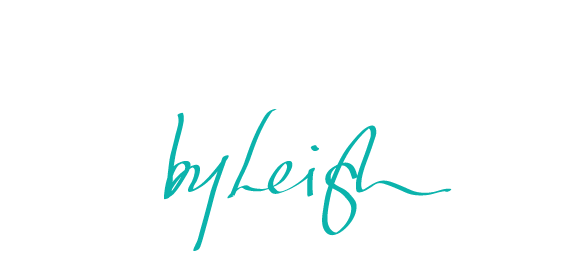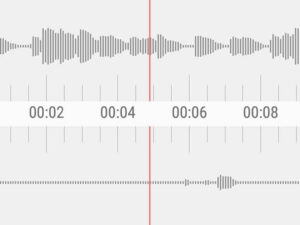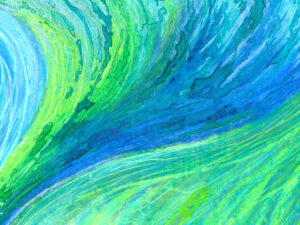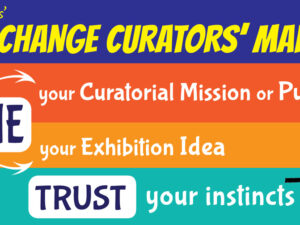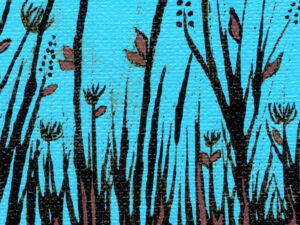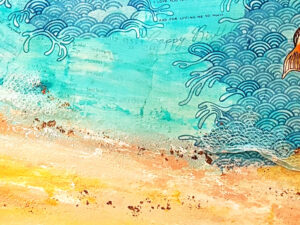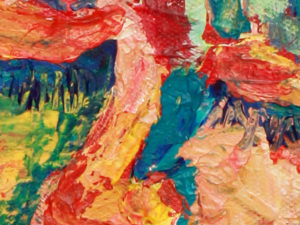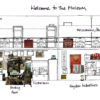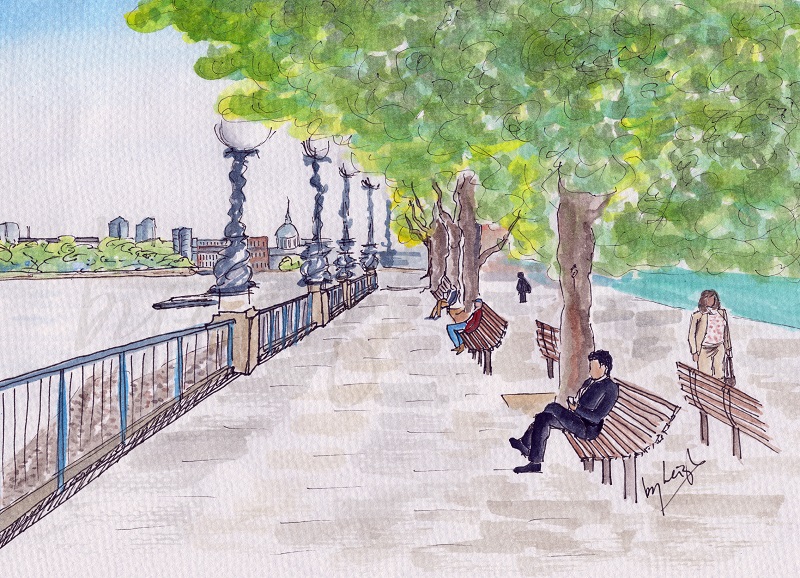
Featured Image: South Bank by Leigh
17 Oct 2019
For Me.
I think of my life in 2 parts – B.K and A.K – Before Kids and After Kids. Nothing has ever focused me as firmly as raising little people to go out in the world and thrive without me.
In 2016, I was finally emerging from five years of being a stay at home mum who did a bit of art on the side to stay sane. The me before kids was passionate about creativity and using it to build confidence in others. The new me that was emerging was still on board with this. In fact, while home with the kids I was creating Life Story Art commissions – paintings that reminded clients of past challenges and achievements, proof that if they did great things once, they could do it again. But this was only reaching one person at a time and satisfying as that was, the world outside was a mess.
For Us
In 2016, the blatant attacks on social justice across the globe slapped me in the face and dared me to ignore them. If the media are to be believed social cohesiveness is in shambles and people everywhere seemed to have lost all traces of humanity. The murder rate in Trinidad has been rising steadily for years (OSAC, 2019). Imagine a population of just over 1.3m with more than 1 murder per day! Everyone I knew, knew someone who had been murdered, and so did I. Here in the UK, I wasn’t sure whether the people that smiled at me during the school run were the same ones who didn’t want any immigrants in their country (Against Borders for Children et al., 2019). I could thank both the Leave & Remain politicians who smeared fear and hate liberally across the country in the Referendum of lies (Stone, 2017). Here I was, finally coming back to myself in midst of Britain tearing itself in two. Then just as I began to find my equilibrium, what I have dubbed ‘The Great U.S. Black Man Hunt of 2016’ kicked off (Tracy, 2016), or maybe I was only just noticing something that had been happening for centuries. Every morning there would be reports of a new black man murdered by police in the USA. Black Lives Matter was raging and begging for black lives to actually matter only to be told that All Lives Matter, yea right (Lopez, 2016). Standing in my kitchen listening to the news that hate crimes had increased against Polish people in the UK (Cavalli, 2019) and that another black man had been ripped from his family with an undeserved bullet in the USA, I collapsed into soul deep sobs. And when I was finished sobbing, it was time to act.
Social Change
With so many bold-faced infractions on social justice for so many people around the world, it was obvious that our world desperately needs social change on a massive scale. I had within me, the skill to wield a powerful weapon and shout in the loudest language – art. Robert Rauschenberg is known for his belief that art can change the world (@The_Zarina, 2017) and I wholeheartedly agreed. It was time for me to use my art and creativity to unite people and communities.
“Art can change the world”
– Robert Rauschenberg
And so here we are – I am a mixed media Life Story Artist determined to use her skill set to effect social change into a world that desperately needs it. My first thought was to create an exhibition where the visitors leave feeling inspired to commit some action towards social change. I wanted action. I wanted change, but what kind of change?
The best definition of social change I have found comes from The Appalachian Community Fund (The Appalachian Community Fund, 2014), a non-profit organisation based in Tennessee, USA. It states,
“The Appalachian Community Fund defines social change as the movement of people toward the establishment of environmental, economic, and social justice and the redistribution of wealth, power, and resources as indicated by evidence of:
- Organizing and action led by people working to control their own lives;
- Educating communities about the root causes of oppression and injustice;
- Eliminating barriers to full participation in society ( i.e. racism, sexism, classism, homophobia, ageism, ablesim, and exclusion from decision-making processes);
- Focusing on efforts to change cultural, social, political, and economic systems and institutions that create, accommodate, and perpetuate social injustice;
- Creating and modeling democratic cultural, social, political, and economic systems;
- Connecting local issues with national and global concerns; and
- Networking, collaborating, and cooperating with other change agents working toward similar goals.”
I felt to extract only a portion of this definition would be to destroy its integrity because the beautiful thing about this is its specificity. It details how The The Appalachian Community Fund (ACF) will know when they have achieved social change. Though it could be detailed even further with statistics and numbers, I think there is more than enough detail for me engage with as I develop an exhibition around social change.
I have found various artworks and exhibitions designed with social change issues in mind. For example, The Art of Influence: Breaking Criminal Traditions highlights Human Rights issues particularly for women (Breaking Criminal Traditions, 2014). Alketa Xhafa Mripa’s Refugees Welcome (Xhafa Mripa, 2016) is a mobile art installation that challenges the ‘hostile environment’ most refugees and immigrants are met with in the UK nowadays (Against Borders for Children et al., 2019).
Clare Patey’s Empathy Museum (The Empathy Museum, 2015) pushes her audience to a level of interaction with her art installation that interests me greatly and unlike many of the others I found, there are no workshops to support her exhibits. As the lead artist, Patey’s exhibit A Mile in My Shoes gives many many people a way to voice their story in their own voice, literally – I love this! The Empathy Museum is the closest project that I have found to my own art and social change objectives. The exhibits stand on their own as an agent of social change, not needing the extended exposure of a workshop to make its impact. Where the Empathy Museum and I deviate is in the vision – I have imagined hosting my exhibition in a gallery-type space, their work is shown in public spaces and pop-up shops. I have imagined collaborating with several artists to create a multi-disciplinary range of artworks, the Empathy Museum’s projects can sometimes be more social experiment than artwork i.e. their A Thousand and One Books installation, which was more of a travelling library. I won’t get into what is and isn’t art, but I will say that I have an idea of how I imagined my exhibition and while I’m willing to relinquish that vision to any evidence that proves something else will be effective, I can’t help but compare my ideas with each similar project I find to see where the similarities and differences lie, and determine what I can learn from each.
What I have noticed is that few people, if any are hosting exhibitions as the main social change event. Most endeavours seem to use workshops or interactive programmes to generate action among participants and then the exhibition is the by-product of this mainly workshop-based social change initiative. People United, Tate Exchange, and (as I mentioned before) Passion for Compassion are examples of this. People United facilitates projects and events in communities to cultivate kindness through art workshops (Andrews et al., 2017), Tate Exchange selects a Lead Artist/Associate to plan a year long programme of events that may or may not have an attached exhibition (Tate, 2018), and Passion for Compassion hosted the exhibition as the end result of the compassion workshops they held in advance (Arts & Culture University of Exeter, 2019). In addition, most of these projects are localised, only the Empathy Museum, is designed for a national and international audience.
Finally, the social change initiatives I have examined also have no obvious call-to-action, I do not know if that is by design or not. The closest I have found to a call-to-action was Passion for Compassion’s compassion exchange where workshop participants and exhibition visitors were invited to leave and take messages of compassion that “spoke to them” (Arts & Culture University of Exeter, 2019). No other exhibition I have found so far is specifically focused on inciting visitor action to create social change, though many workshops are. There could be two reasons for this:
- Workshops and collaborative community events are more effective at eliciting active participation and change action than an exhibition i.e. a person needs to have a more involved experience to be inspired to any action.
- No one has tested the exhibition yet as a means of large-scale social change through art? I think this is highly unlikely. I think what is more likely is that such exhibitions were designed to elicit thought, but not necessarily action. That’s something I’ll have to explore.
Honestly, I don’t know where to start with this. Who and what do I need to get this done and how do I organise all these elements to make this exhibition effective. So I think that is what this research has to be about –
How do I research, plan and fund a large-scale exhibition that inspires visitors to commit compassionate action?
There are many social change initiators, curators and artists already operating in the world and having significant impact (Obaid Chinoy, 2017). My aim with this research is to map a clear way to approach the development of an exhibition designed to trigger social change activity. I plan to study art events or exhibitions that have either sought to stimulate action or social change thinking from their audiences. My hope is that the observations I make using a Contextual/Practice Review and the structures and processes I uncover from interviewing social change curators will help me to identify effective ways for me to:
- begin gathering the resources I need to curate a successful social change action exhibition, and
- identify the aspects of artwork that tend to inspire or call audiences to action.
I hope to find several options for ways to set up my exhibition and then select one that fits my skills, abilities and personality so that I can build on current knowledge to achieve something new – an exhibition that prompts social change action. When I first had the idea to curate a social change exhibition, it did not start as curation. It was simply the thinking of an artist who needed to do something. If I can produce a series of options that will give my creative peers multiple routes to exhibitions with social change impact (as defined by the ACF), I’ll be thrilled. My findings could potentially be a massive boost for other non-curators who wish to use the power of art to drive social change (Heinecke, 2019). The impact of such an exhibition within any community should be healing as people take action to have conversations that build bridges of understanding and caring. In the words of Oscar-winning documentary filmmaker Sharmeen Obaid Chinoy,
“Good art can educate and create empathy,
and empathy leads to change”
(Obaid Chinoy, 2017)
And this is my dream – to be and do and facilitate social change.
—
References
@The_Zarina (2017). ‘Art Can Change the World’ – In the Footsteps of Robert Rauschenberg. Dutch Girl in London. Available at: https://dutchgirlinlondon.com/2017/03/10/art-can-change-the-world-in-the-footsteps-of-robert-rauschenberg/ [Accessed 8 Oct. 2019].
Against Borders for Children, The Anti-Raids Network, Doctors of the World UK, Joint Council for the Welfare of Immigrants (JCWI), Liberty, Migrants’ Rights Network, National Union of Students, North East London Migrant Action and Project 17 (2019). A Guide to the Hostile Environment. London, UK: Liberty, pp.8–9. Available at: https://www.libertyhumanrights.org.uk/sites/default/files/Hostile%20Environment%20Guide%20%E2%80%93%20update%20May%202019_0.pdf [Accessed 9 Nov. 2019].
Andrews, T., Bunting, C., Corri, T. and Fox, S. (2017). Changing the World through Arts and Kindness – Evidence from People United projects 2007-2017. Kent, UK: People United Publishing, pp.7–15.
Arts & Culture University of Exeter (2019). Passion for Compassion Art Exhibition. [online] Artsandcultureexeter.co.uk. Available at: https://www.artsandcultureexeter.co.uk/whats-on/passion-compassion-art-exhibition/ [Accessed 23 Nov. 2019].
Breaking Criminal Traditions (2014). The Art of Influence – Breaking Criminal Traditions. [online] Breakingcriminaltraditions.com. Available at: http://www.breakingcriminaltraditions.com/bcthistory.html [Accessed 28 Nov. 2019].
Cavalli, N. (2019). CSI 34: Did Hate Crime double after Brexit? [online] Oxford, UK. Available at: http://csi.nuff.ox.ac.uk/wp-content/uploads/2019/06/CSI34_hate-crime.pdf [Accessed 9 Nov. 2019].
Empathy Museum (2015). Empathy Museum. [online] Empathymuseum.com. Available at: http://www.empathymuseum.com/ [Accessed 19 Oct. 2019].
Heinecke, A. (2019). Why we need artists who strive for social change. [online] World Economic Forum. Available at: https://www.weforum.org/agenda/2019/07/why-we-need-artists-social-change/ [Accessed 21 Dec. 2019].
Hope, C. (2013). Home Office’s “Go Home” immigration vans campaign overwhelmed by hoax texts and calls. [online] Telegraph.co.uk. Available at: https://www.telegraph.co.uk/news/uknews/immigration/10417987/Home-Offices-Go-Home-immigration-vans-campaign-overwhelmed-by-hoax-texts-and-calls.html [Accessed 21 Dec. 2019].
Lopez, G. (2016). Why you should stop saying “all lives matter,” explained in 9 different ways. [online] Vox. Available at: https://www.vox.com/2016/7/11/12136140/black-all-lives-matter [Accessed 9 Nov. 2019].
Obaid Chinoy, S. (2017). How can Artists lead dramatic Social Change? [online] World Economic Forum. Available at: https://www.weforum.org/agenda/2017/01/how-can-artists-lead-dramatic-social-change/ [Accessed 21 Dec. 2019].
OSAC (2019). Trinidad & Tobago 2019 Crime & Safety Report. [online] Osac.gov. Available at: https://www.osac.gov/Country/TrinidadTobago/Content/Detail/Report/83007ec0-cd97-4dc2-95ac-15f4aecc2072 [Accessed 9 Nov. 2019].
Stone, J. (2017). Brexit lies: The demonstrably false claims of the EU referendum campaign. The Independent. [online] 17 Dec. Available at: https://www.independent.co.uk/infact/brexit-second-referendum-false-claims-eu-referendum-campaign-lies-fake-news-a8113381.html [Accessed 9 Nov. 2019].
Tate (2018). Tate Exchange | Tate. Tate. Available at: https://www.tate.org.uk/tate-exchange [Accessed 22 Oct. 2019].
Wikipedia Contributors (2019). Demographics of Trinidad and Tobago. [online] Wikipedia. Available at: https://en.wikipedia.org/wiki/Demographics_of_Trinidad_and_Tobago#cite_note-UN_Demographic_Yearbooks-6 [Accessed 21 Dec. 2019].
Xhafa Mripa, A. (2017). Art as the catalyst for social change | Alketa Xhafa Mripa | TEDxTirana. YouTube. Available at: https://www.youtube.com/watch?v=dLTBzvHBK4s&list=PLV7MK9tuRFKHcyhfiw6KIfuVxksoE7kyz&index=15&t=0s [Accessed 18 Nov. 2019].
